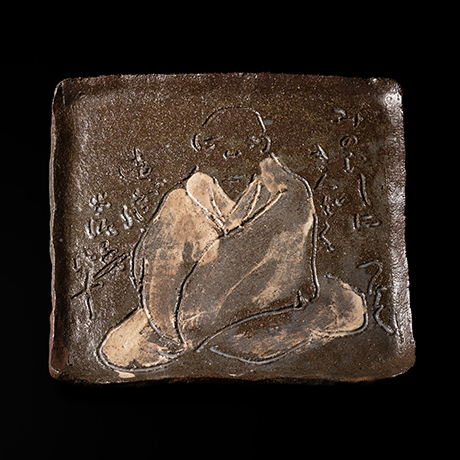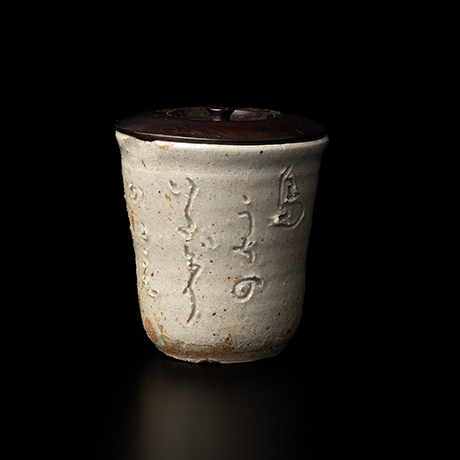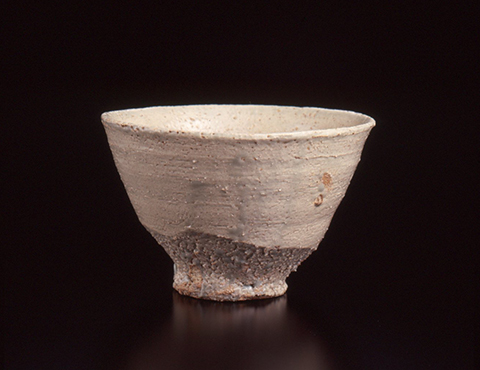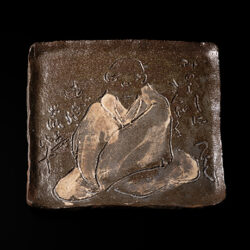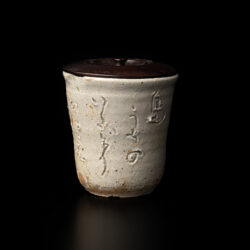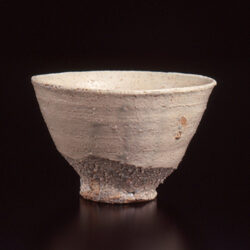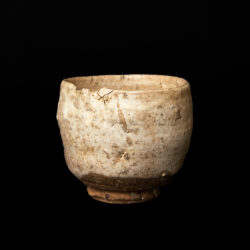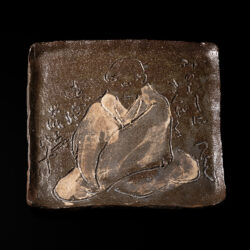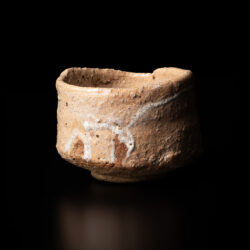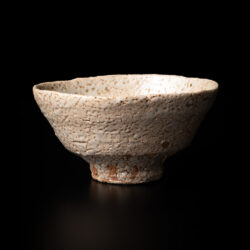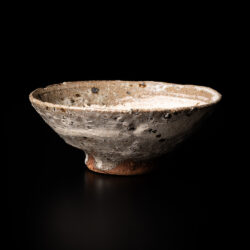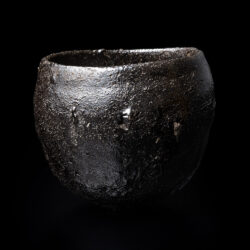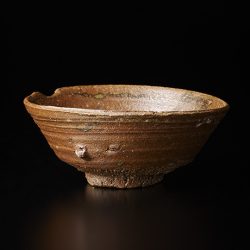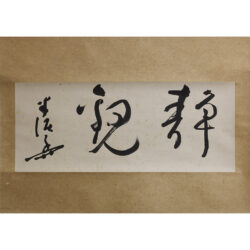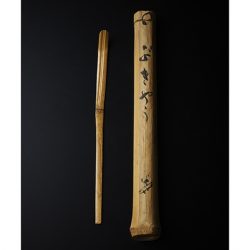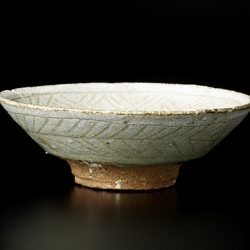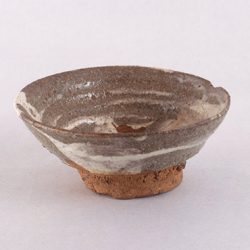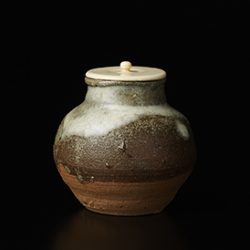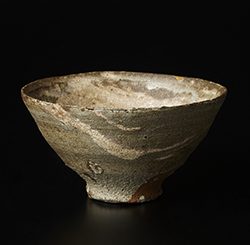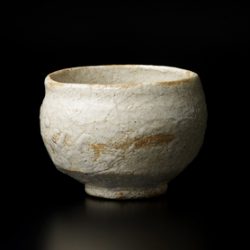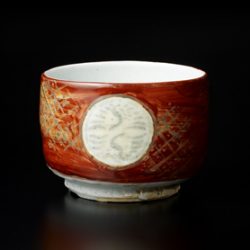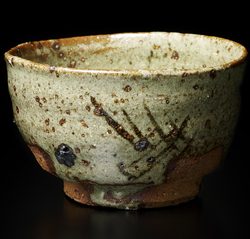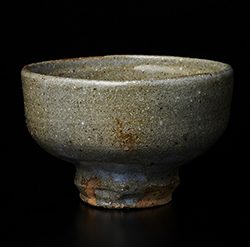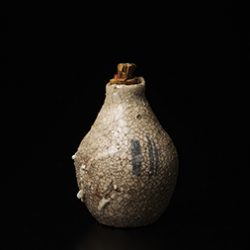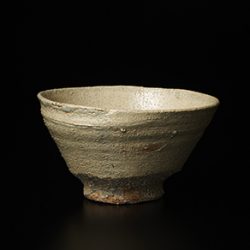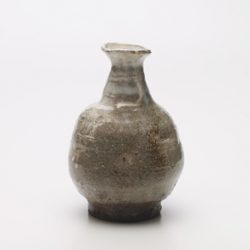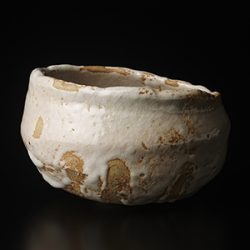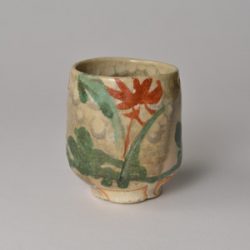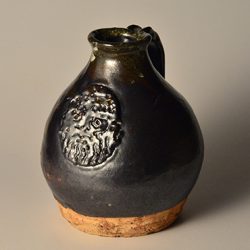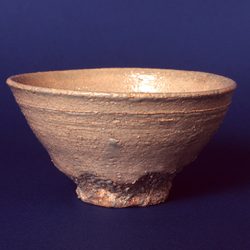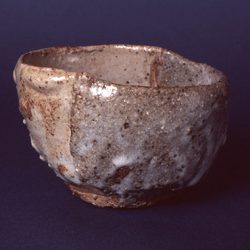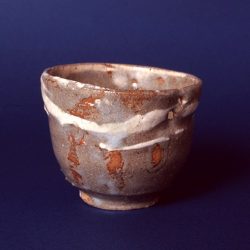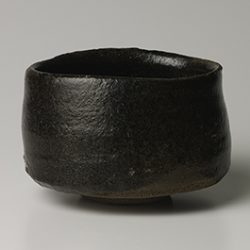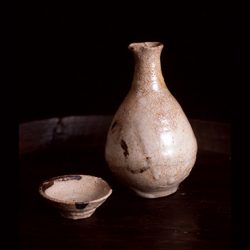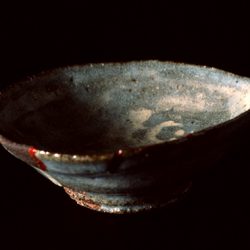川喜田 半泥子KAWAKITA Handeishi
陶歴/ History
1878年 大阪市東区で生まれる1894年 三重県尋常中学校(三重県立津高等学校)で当時同校で教えていた藤島武二に洋画を学ぶ
1900年 東京専門学校(早稲田大学商学部)に入学
1903年 百五銀行に取締役として入行する
1909年 津市議会議員に当選(1913年に再選)
1910年 三重県議会議員に当選
1912年 津市南郊外にある千歳山を購入する
千歳山の土が陶土であることを知り楽焼を試みる
1913年 中国・朝鮮半島を旅行し、各地の陶土を持ち帰る
1916年 三重農工銀行の頭取に就任 日本画を狩野派の三谷有信に学ぶ
1919年 百五銀行の頭取に就任(昭和20年まで在任)
1922年 三重合同電気会社(のち中部電力に合併)に社長として就任
1925年 明治生命監査役に就任 千歳山北部に両口倒焔式の石炭窯を築く
1930年 私財及び、旧宅の土地を寄付し、財団法人石水会館を設立する
1933年 小山冨士夫設計の二袋煙突式薪窯を千歳山南端に築き、轆轤場も設ける
(小山冨士夫・真清水蔵六らが来て、初窯を焚くが失敗に終わる)
1934年 多治見・瀬戸の窯、また朝鮮半島や唐津の古窯址をを見学調査
自らの設計で三袋の登窯を築き、初窯を成功する(翌年から「千歳窯」と呼ぶ)
1942年 荒川豊蔵・金重陶陽・三輪休和と「からひね会」を結成する
1943年 南画家・藤本木田らによって「千歳山半泥子六十六名碗鑑」を刊行
1945年 百五銀行頭取を辞任し、会長となる
終戦後、千歳山を進駐軍に接収されたため、津市郊外長谷山に疎開する
1946年 千歳山の窯を長谷山に移し、広永陶苑を創設する
1950年 百五銀行相談役となる
1954年 喜寿を記念して、喜寿祝賀77碗をつくる
1955年 進駐軍退去後に千歳山の本宅を再建し、居住を移す
1956年 藍綬褒章授章
傘寿記念の茶碗80碗の製作を始める(希望者多数により100碗となる)
1957年 八十寿祝賀会開催 参加者100人に記念の茶碗と図録「半泥子八十賀百碗鑑」を贈る
1958年 広永窯に泥仏堂を建立
1963年 84歳で逝去
1878 Born in Osaka
1894 Studied Western Painting under FUJISHIMA Takeji at a junior high school in Mie
1900 Enrolled Tokyo Professional School, present Waseda University.
1903 Become a director at Hyakugo Bank
1909 Become a council of Tsu city in Mie, and reelected in 1913
1910 Become a council of Mie Prefecture
1912 Bought Chitoseyama mountain, which he later knew the clay is suitable for pottery and tried Raku ware.
1913 Traveled China and Korean Peninsula, and brought back clay of the places.
1916 Became a president of Mie Farmers Bank.Studied Japanese painting under Mitani Arinobu, one of Kano School masters.
1919 Inaugurate a president of Hyakugo Bank until 1945
1922 Became a president of Mie Electric Company, Chubu Electric Power
1925 Become a Auditor of Meiji Life Insurance Company. Built a Chacoal Kiln at Chitoseyama mountain
1930 Estabished Sekisui Kaikan Incorporated Foundation
1933 Built wheeling studio and a kiln which was designed by KOYAMA Fujio at Chitoseyama mountain
1934 Researched on kilns in Tajimi, seto, and old kilns at Karatsu and in Korean Peninsula. Later built Chitosegama kiln designed by himself
1942 Bacame a member of what is known as "Momoyama Revival Movement" with ARAKAWA Toyozo and KANESHIGE Toyo
1954 Made seventy seven teabowls for the anniversary of seventy seven year-old.
1956 Awarded Medal with Blue Ribbon. Started to make eighty tea bowls for the eighty year-old anniversary.
1957 Give his tea bowl and a catalog to the participants of his eighty year-old anniversary party.
1958 Built his tearoom "Deibutsu-do" at Hironaga kiln
1894 Studied Western Painting under FUJISHIMA Takeji at a junior high school in Mie
1900 Enrolled Tokyo Professional School, present Waseda University.
1903 Become a director at Hyakugo Bank
1909 Become a council of Tsu city in Mie, and reelected in 1913
1910 Become a council of Mie Prefecture
1912 Bought Chitoseyama mountain, which he later knew the clay is suitable for pottery and tried Raku ware.
1913 Traveled China and Korean Peninsula, and brought back clay of the places.
1916 Became a president of Mie Farmers Bank.Studied Japanese painting under Mitani Arinobu, one of Kano School masters.
1919 Inaugurate a president of Hyakugo Bank until 1945
1922 Became a president of Mie Electric Company, Chubu Electric Power
1925 Become a Auditor of Meiji Life Insurance Company. Built a Chacoal Kiln at Chitoseyama mountain
1930 Estabished Sekisui Kaikan Incorporated Foundation
1933 Built wheeling studio and a kiln which was designed by KOYAMA Fujio at Chitoseyama mountain
1934 Researched on kilns in Tajimi, seto, and old kilns at Karatsu and in Korean Peninsula. Later built Chitosegama kiln designed by himself
1942 Bacame a member of what is known as "Momoyama Revival Movement" with ARAKAWA Toyozo and KANESHIGE Toyo
1954 Made seventy seven teabowls for the anniversary of seventy seven year-old.
1956 Awarded Medal with Blue Ribbon. Started to make eighty tea bowls for the eighty year-old anniversary.
1957 Give his tea bowl and a catalog to the participants of his eighty year-old anniversary party.
1958 Built his tearoom "Deibutsu-do" at Hironaga kiln

